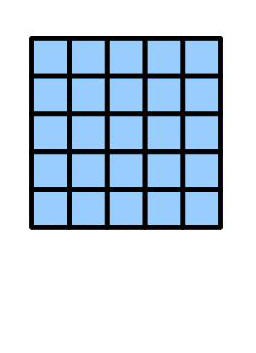I have not read anything thoroughly about higher categories. I am only aware that in higher categories, we have higher dimensional cells, after adjusting for the intuition that 0-, 1-, 2-dimensional cells are respectively, objects, morphisms, and commuting squares. This terminology is similar to what we from arrow construction, as it follows.
Given a category $\mathcal{C}$, the objects of an arrow category $\mathcal{C^{\rightarrow}}$ are morphisms of $\mathcal{C}$ and morphisms of $\mathcal{C}$ are commuting squares. Another way to think of an arrow category is by considering $\mathcal{C^{\rightarrow}}$ as $\mathcal{C}^{2}$, the category of functors from $2$ to $\mathcal{C}$, where $2$ is the category $0 \longrightarrow1$ and a morphisms of $F: 2 \longrightarrow \mathcal{C}$ and $G: 2 \longrightarrow \mathcal{C}$ is a natural transformations of $F$ and $G$; this is actually a functor $\phi:2 \times 2 \longrightarrow \mathcal{C}$. Moreover, this construction is functorial, i.e., it yields an endofunctor $A$r: Cat $\rightarrow$ Cat, which I call the arrow functor.
Now, for a given category $\mathcal{C}$ (just for the purpose of this question) let $\mathcal{C} ^ {\stackrel{\rightarrow} {n}}$ denote the category which is obtained by an $n$-times iteraion of Ar, with the convention that $\mathcal{C}^{\stackrel{\rightarrow} {1}}$ is the usual arrow category and $\mathcal{C}^{\stackrel{\rightarrow} {0}}$ is $\mathcal{C}$ itself. So, for example the objects and morphisms of $\mathcal{C}^{\stackrel{\rightarrow} {2}}$ are respectively pairs of morphisms and commuting squares in $\mathcal{C}^{\stackrel{\rightarrow} {1}}$. But, as morphisms of $\mathcal{C}^{\stackrel{\rightarrow} {1}}$ are again commuting squares in $\mathcal{C}^{\stackrel{\rightarrow} {0}}$, we can think of objects and morphisms of $\mathcal{C}^{\stackrel{\rightarrow} {2}}$ respectively as commuting squares and commuting cubes in $\mathcal{C}$. Generally, objects and morphisms of $\mathcal{C}^{\stackrel{\rightarrow} {n}}$ are respectively n-dimensional and n+1-dimensional cubes in $\mathcal{C}$, where an $i$-dimensional cube is a functor $$F:2 \times 2 \times ...\times 2 \longrightarrow \mathcal{C}$$
Question: Can $\mathcal{C}^{\stackrel{\rightarrow}{n}}$ model higher categories? What about the category $\mathcal{C}^{\stackrel{\rightarrow}{\infty}}$ which has all $\mathcal{C}^{\stackrel{\rightarrow}{i}}$ (for $i \in \mathbb{N}$), while as objects and functors between them as morphisms. (Not too sure about this. What would be an appropriate class of morphisms between $\mathcal{C}^{\stackrel{\rightarrow}{n}}$ and $\mathcal{C}^{\stackrel{\rightarrow}{m}}$ anyway?) Please, let me know if this construction is of any relevance to higher category theory. This might help me learning some higher category theory.

